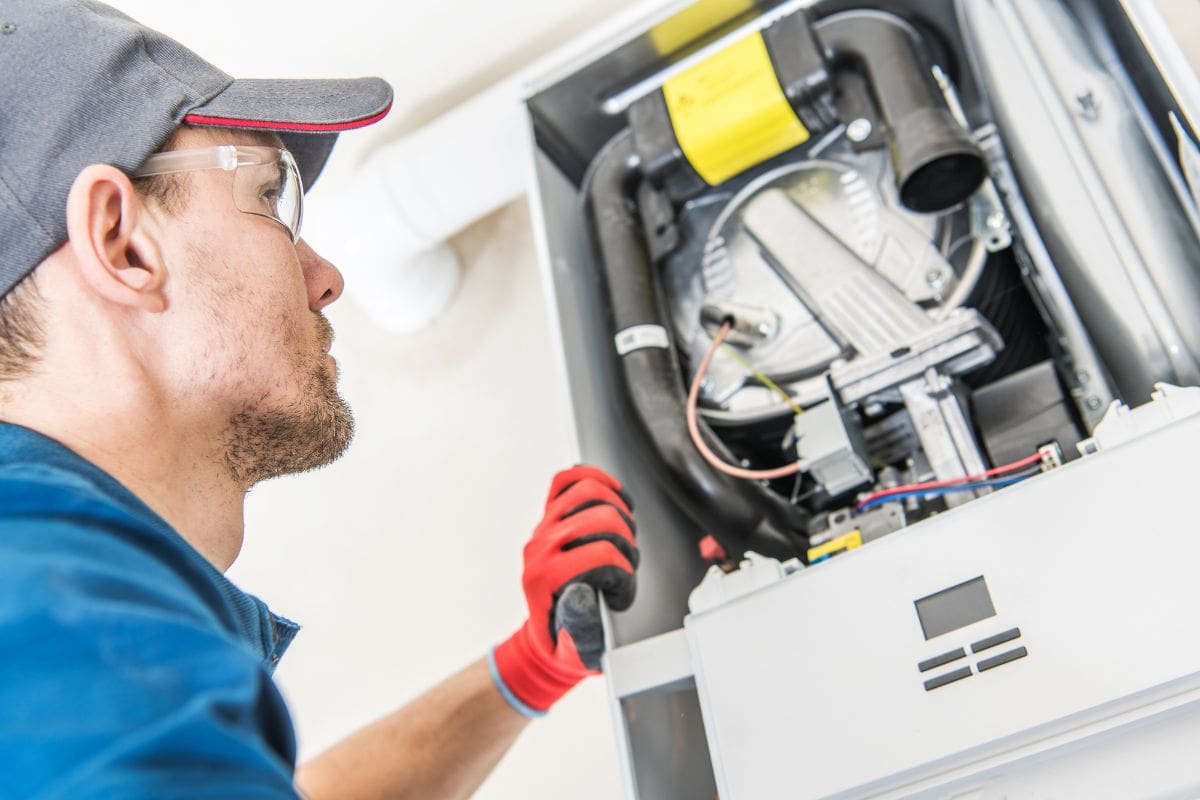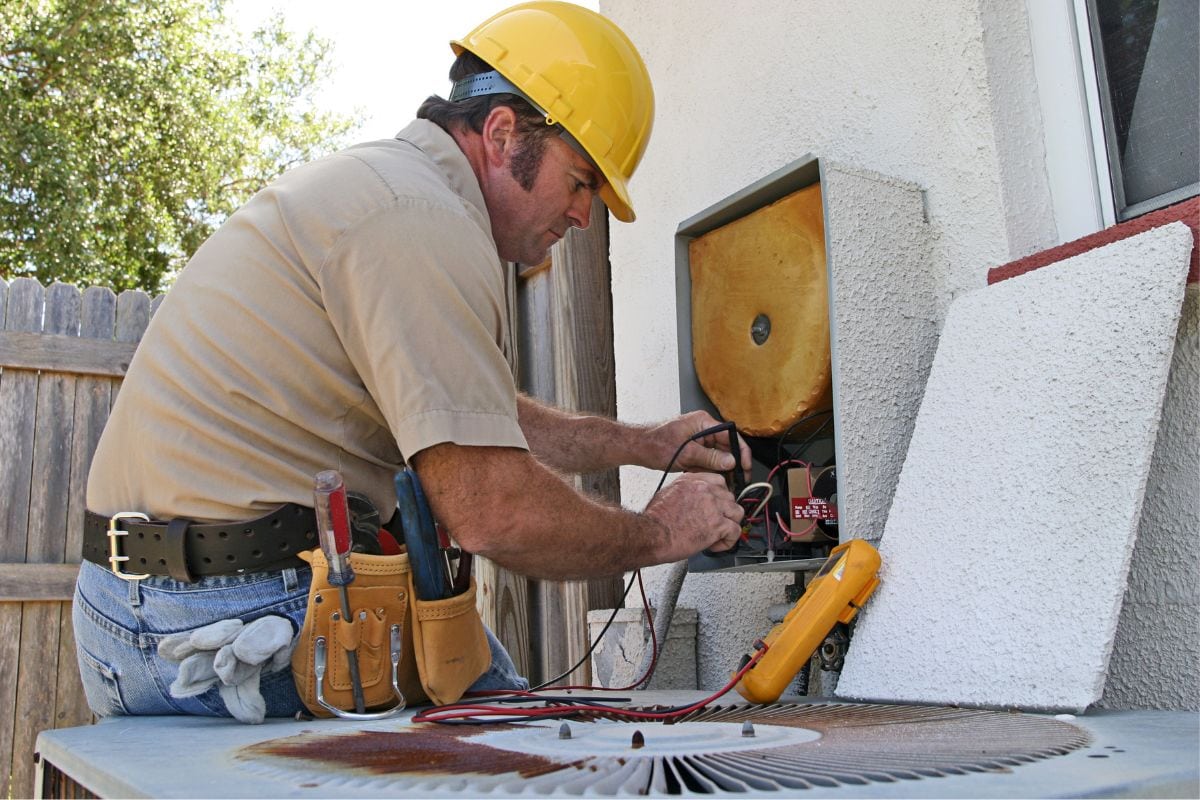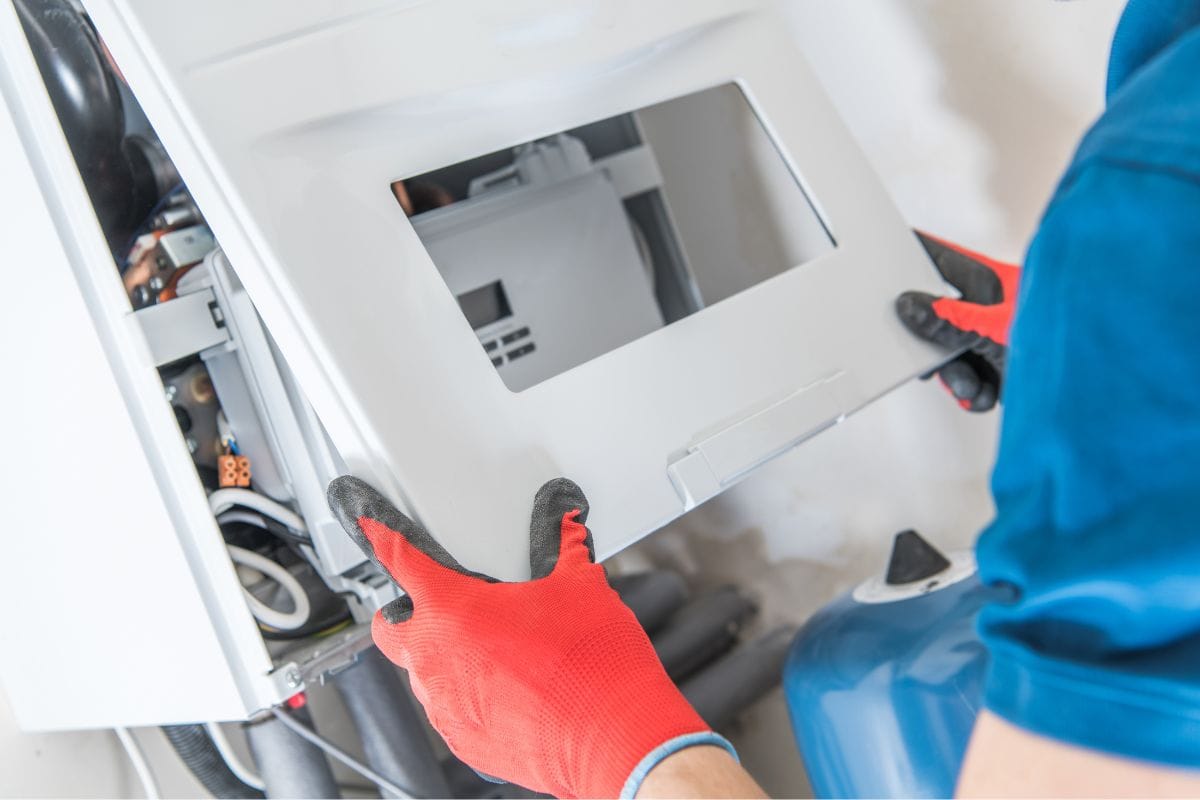Carrier furnaces are one vital appliance in your house. It is beneficial to regulate proper heat within your home, especially during the winter season. Keeping it in its best shape all winter round is a good habit to practice.
However, like any other appliances in your home, Carrier furnaces are not free from issues or damage. Just like when it produces solid orange light, what could be wrong? Worry no more! We've got this; kindly read the answer below.
Generally, when your Carrier furnace emits solid orange light, it could be due to a dirt build-up on its burners. As a result, it hinders the furnace supply gas from reaching out to your burners.
It produces an orange light indicating an improper mixture between the furnace gas and oxygen.
Follow us below, as we will share with you some relevant signs of why your furnace is malfunctioning. We'll also teach you how you correctly troubleshoot your Carrier furnace a while later. So keep on reading!

What Are The Signs Of A Malfunctioning Carrier Furnace?
It is crucial to look for warning indications if a furnace is having trouble keeping a house warm or not working. In contrast, many of these signs are easy to identify during a regular furnace inspection, but some signs are not.
Here below are the most common signs that signify your furnace is facing a problem:
Older Furnace
Your furnace unit is prone to failure as it gets older. Finding out the furnace's age and whether it has recently undergone maintenance is a great habit before moving into a new house.
Failure to do so will result in your house having an airflow full of dust and tiny debris circulating across your home. Additionally, older furnace systems have a 56% - 70% annual fuel utilization efficiency (AFUE).
Meanwhile, modern furnace systems can achieve as high as 98.5% AFUE, using all its fuel efficiency for your home.
A Faulty Pilot Light
Your furnace needs a heat source to make your house much warmer.
If your furnace runs on gas, it requires a burner to generate heat; therefore, functional pilot light is necessary for your burners to ignite.
Broken Thermostat And Short-Cycling
One of the possible causes of a furnace short-cycling is a broken thermostat. This occurs when the furnace doesn't go through the entire heating cycle. Instead, it cuts off the furnace operation and restarts a short while later.
Your furnace won't even turn on. Otherwise, it will continue to run. Both of these issues could arise if the thermostat loses any of its numerous connections to your furnace or the air handler.
Poor Heating Efficiency

A furnace's primary function is to heat your house. It's time to schedule a repair if you realize your furnace isn't doing its job well. Your furnace may not be producing enough heat for a variety of reasons.
It includes; A dirty air filter, jammed or damaged blower motor, and even obstructed air ducts. You should change the furnace filter every 60 - 90 days.
Check out these furnace filters on Amazon.
Less Energy Efficient
An abnormally high energy bill may signal that your furnace becomes less efficient during the heating season. If your energy usage is much higher than the previous season, your furnace is to blame for your main energy spikes.
Uneven Heating Cycles

Your furnace should operate at regular heating cycles to keep the ideal temperature while functioning properly. It may indicate a problem if you see it going on and off more often or running continuously.
Strange Sound
Your furnace will make some noise, which is normal and fine, but if you begin to hear anything unusual, it could be a red flag.
Such as loud bangs, bumps, whistling, grinding, screeching, shrieking, etc., are a few examples.
Weird Smell
It's typical for a furnace to have a slight odor while running for the first time in the season due to dormant dust particles. A fragrance that persists for more than a day should raise some red flags.
For instance, a persistent metallic or burning rubber-like smell may indicate something wrong with your furnace unit. Consulting an expert is your best option to troubleshoot the furnace and pinpoint the issue accurately.
How Do You Troubleshoot A Carrier Furnace?
Gas furnaces are widely common in U.S households; thus, we will focus on the furnace that utilizes gas or propane. Use this troubleshooting guideline to assess the following Carrier furnace issues:
- Ensure the thermostat is set to HEAT mode and put its thermal level at least 70 degrees.
- Carefully examine the furnace's breaker switch or fuse panel and ensure it's in the ON position.
- Check the fan switch settings; you should set it to ON and clean it if necessary.
- If your furnace is still not providing sufficient heat, check its USS switch and put it to ON.
- Replace your furnace air filter.
- Ensure that the furnace air return grilles aren't dirty. Otherwise, you can vacuum any dirt accumulation in it.
- After cleaning the air return grilles, reattach them according to where the air should exit.
- Securely check the furnace supply air registers and ensure it is properly blowing air.
WARNING! Don't ever conduct any further troubleshooting procedures if you don't have enough knowledge of them, as this can be dangerous.

How To Determine A Carrier Furnace Error Code
The Carrier furnace error codes differ depending on the model. After all, most of the widely used furnace brands express their system error codes via flashing lights.
Observing the LED light is one simple way to know what error code is flashing. Another method is to observe how it blinks to identify the furnace error code.
Take note of the frequency and duration of the flashes as your guide.
Furthermore, you should refer to your installation handbook for better details on each combination of lights.
1-1 Flashes Error Codes
This code will show when the 115VAC or 24VAC power to the control is cut off. Also, within 48 hours after each problem is fixed, the status codes in the system will be erased.
1-2 Flashes Error Codes
A safety warning feature tells you that the blower needs to work for about 90 seconds if the furnace is powered on during a request for heat.
1-3 Flashes Error Codes
A sign that the limit or flame roll-out switch lockout. This will be gone after the control; it will auto-reset for around 3 hours.
1-4 Flashes Error Codes
An indication that your ignition system is in lockout mode. Again, this will fix within 3 hours after the system auto-reset the furnace.
2-1 Flashes Error Codes

If this error will show, it simply says that your furnace gas heating system is in a lockout. You can prevent this error from showing by ensuring its gas valve is wired correctly, or its control isn't defective.
NOTE: You can determine these error codes alone. However, consulting an expert will precisely tell you the root problem of these errors.
Where Is The Reset Button On A Carrier Furnace?
The brand and model determine your furnace reset button's location. You should be able to locate the reset button on the unit's blower motor if your home has both central heating and air.
Typically, the reset button comes in red or yellow to make it stand out and easily identify.
How Do You Reset A Carrier Furnace?

Try resetting your Carrier furnace to see if it restores the system to function again effectively. You can typically reset the Carrier furnace to fix problems like ignition lockup.
Here are a few easy steps to properly reset your Carrier furnace:
- Switch OFF your thermostat to prevent it from activating when requesting heat from your furnace.
- Shut OFF the furnace breaker or unplug your furnace from its power outlet.
- Allow the furnace system to process everything for about 30 seconds.
- Put the breaker's power source on or plug the furnace back in the outlet.
- Switch ON the thermostat.
To Wrap Up
Finding out what causes your Carrier furnace to emit solid orange light will prevent any serious problems to inflict on the furnace. It's also a great idea to reset the Carrier furnace whenever it senses an error during its operation.
Throughout this post, we've covered the few symptoms that cause your furnace to function strangely. You know how to troubleshoot when the furnace is facing a particular issue.
By giving you all of this vital information, we can now set off knowing that you can now care for your Carrier furnace better than before.
Before you leave, check out these helpful posts!

